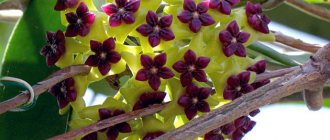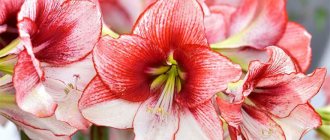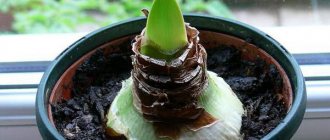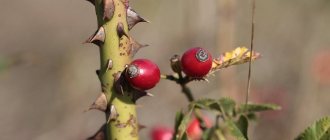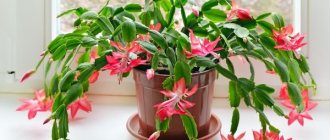The genus Amaryllis belongs to the Amaryllidaceae , bred by the Swedish botanist, mineralogist, zoologist and physician Carl Linnaeus in 1753 and includes 4 species of plants.
At home, the most commonly grown plant is amaryllis belladonna, which was cultivated in 1700.
Amaryllis bulbs were first introduced to England, then to Australia, and then to America. It was in Australia at the beginning of the 19th century that hybrid plants with different flower colors were bred.
Amaryllis. Description of the plant
In the wild, during the short period of flowering of the savannah, the bulbous Amaryllis flower manages to decorate its lush herbs. After 1-2 months, when a drought sets in, it goes into long-term rest, only to be reborn with renewed vigor a year later. At home he behaves exactly the same.
The flower has a double called hippeastrum, with which even experts often confuse it. It is this one that is present on most window sills, as it has been most mastered by breeders who have created many hybrid varieties. Amaryllis was once considered a type of lily; in the 18th century it was identified as a separate species by the Swedish botanist K. Linn.
Amaryllis is a flower whose home care is determined by its growth pattern. An herbaceous perennial with an elongated bulb up to 10-12 cm in size, during the active period it produces a bare, smooth peduncle stem 40-60 cm high. Paired leaves, also emanating directly from the bulb, have the shape of long, narrow knives and are dark green, juicy coloring
An inflorescence of 2-12 large funnel-shaped flowers opens at the top of the stem. In South Africa, this event occurs in the spring and lasts 1-1.5 months, in our country, accordingly, flowering occurs in the fall and ends twice as fast.
Flower growers have learned to shorten or extend the resting time of a plant, encouraging it to bloom by a specific date. But this disrupts the natural course of events and can affect the health of the flower.
Large flowers, growing up to 10-12 cm in diameter, are colored from white and soft pink to purple and lilac in a variety of shades.
Hippeastrum flowering
The flowering of hippeastrum occurs at the same time and according to the same pattern as the flowering of amaryllis. But the inflorescences and flowers of hippeastrum themselves differ from amaryllis, albeit slightly.
Most hippeastrums have larger flowers: they can be up to 15 cm in diameter. In an inflorescence, as a rule, there are from 2 to 6 flowers.
The shapes and colors of hippeastrum are much more diverse than amaryllis; there is even a striped hippeastrum. And the shape of the flowers can be more elongated than amaryllis flowers, or, on the contrary, more rounded.
- Watering, fertilizing and replanting philodendron
Since all modern hippeastrums are hybrids, this made it possible to develop a huge number of varieties. New hybrids are obtained either by crossing existing hippeastrum varieties or by crossing with amaryllis. Thus, more than 80 species of hippeastrum were obtained.
Among all this diversity, there are very tiny ones with a peduncle height of 30 cm, and there are also large-flowered hippeastrums with a flower size of up to 20 cm in diameter and a plant height of up to 75 cm.
On average, 4 large flowers bloom, similar to a gramophone trumpet. Hippeastrum flowers can be simple or double. They are bell-shaped or funnel-shaped in shape. In size, hippeastrum flowers are small-, medium- and large-flowered. Each flower has about 18 petals.
Distinctive features of Amaryllis and Hippeastrum
“Brother” plants are not complete twins, and therefore when purchasing a bulb or potted flower, you can determine what exactly the consultant is offering.
| Differential factor | Amaryllis | Hippeastrum |
| Place of birth, degree of adaptation to a different climate | South Africa. After the country of “eternal summer”, it is more difficult to get used to other conditions and is capricious in care. | South America. Easier to adapt, less picky. |
| Bulb shape and size | Elongated, elongated, pear-shaped, up to 12 cm | Round, onion-like, 7-9 cm |
| Peduncle stem | Rich green color, up to 60 cm long, dense to the touch when squeezed. | Green with a reddish tint, over 60 cm long, hollow inside. |
| Flowering period | Autumn, blooms once a year | End of winter - beginning of spring, may bloom again at the end of summer (depending on living conditions and variety). |
| Color range of inflorescences | Shades from white to red | Wide palette: shades of red (to dark burgundy), yellow, orange, as well as multi-color options. |
| Number of flowers in inflorescence | 5-7, up to 12 | 2-4 |
| Aroma | Pleasant, bright | Weak or absent at all |
| Number of species | 4 main ones, the rest of the varieties are the result of selection | 80-90 main, more than 2000 selected varieties |
Dormancy and flowering period:
The rest period should be done from December to April, since these periods are more natural for this plant and are as close to natural as possible. In this case, Amaryllis is less depleted and tolerates flowering more easily.
At the end of August and beginning of September, it is necessary to begin to reduce watering and fertilization. By the end of October - November, all watering should be stopped. As you begin to reduce watering, Amaryllis will begin to shed its leaves and absorb all the nutrients from them into the bulb. Therefore, you should not pick off the leaves until they are completely dry. With a complete cessation of watering, Amaryllis should lose all its flow.
During the dormant period, the plant must be watered once a month as it retains some roots. It does not need lighting, so it can be moved to a dark, cool and always dry place. The storage temperature should not fall below 10 ºC, as the bulbs are not frost-resistant.
Amaryllis usually blooms in early March. In order to stimulate it, you need to move the pot to a warm and well-lit place and begin to gradually increase the amount of watering, adjusting it relative to the intensity of growth. Depending on the species, foliage or flowers may appear first—either is normal, but flower stalks often appear.
After flowering ends, the peduncle is cut off at a height of 3-4 cm from the base of the bulbs.
Some Amaryllis owners cut the peduncle from the bulb immediately after the flower opens and place it in water, since the flowering time in the vase and on the plant is almost the same, but this way you prevent unnecessary depletion of the bulb and stimulate the appearance of a new peduncle. The water in a vase with a flower must be changed daily.
After flowering, the plant continues to be regularly watered and fertilized, as Amaryllis begins to actively grow foliage. The more foliage that grows over the spring and summer, the better it will be for the bulb; they will help it stock up on energy for the dormant period and new flowering. With each new leaf, if the conditions of watering and fertilization are met, the amaryllis bulb lays flower buds or daughter bulbs, and they can begin to grow.
Conditions for keeping the plant at home
Amaryllis is a flower that requires attention and some skills from the gardener to care for at home. The plant has two phases of life: dormancy and vegetation, and therefore the conditions for keeping it during these periods must be different.
Lighting
A flower born in sunny Africa loves bright light during the active period and prefers the south, southwest, southeast side of the house. However, during the hottest period it must be slightly shaded to avoid burns.
To ensure the health of the plant, its daylight hours must last at least 14 hours. And in order for the tall peduncle to grow straight, without bending to the side, risking breaking off under the weight of the inflorescence, the pot should be periodically rotated around its axis.
A plant that has gone into a dormant period and dropped its stem and leaves is put away in a low-light place: in some apartments the pot is placed in a pantry or bathroom, in houses - in the basement.
Temperature
During the growing season, Amaryllis prefers a fairly high and constant ambient temperature (22-250C); a nighttime decrease of approximately 5 degrees is allowed.
On vacation, the room temperature should be between 10 and 13 degrees. These conditions will allow the plant to gain strength for new flowering without stress. However, it should be remembered that a further decrease in temperature will destroy the flower.
Humidity
Regarding air humidity, there is a simple relationship: the higher the air temperature, the more effort should be made to increase the humidity in the room. In hot weather, the flower should not only be watered, but also sprayed regularly.
To create a comfortable environment, you can place an electric humidifier, a vessel with water or an aquarium next to the plant.
Amaryllis, like almost all indoor plants, does not like drafts, but responds well to airing the room.
Soil and drainage
When purchasing land, you should choose soil designed for the bulbous plant family. When creating a substrate yourself, you need to mix equal parts of turf and garden soil, coarse sand, peat and humus.
The pot for Amaryllis should have holes to drain excess water. A drainage layer of up to 4 cm must be placed at the bottom of the container. This can be expanded clay purchased in a store, small pebbles or coarse sand.
Watering
The South African flower needs watering, but does not tolerate excess water. It should be watered during the growing season only when the earthen coma is dry (but not dry). The soil in the pot just needs to be moistened by directing the spout of the watering can around the perimeter of the pot, without getting on the bulb.
Excess water should be poured out of the pan to avoid rotting of the root system. It is even better to water through a tray.
At the end of the active phase, when flowers and leaves wither, the amount of watering is reduced to twice a week. During the dormant period, the flower is not watered at all or, if necessary, this is done during inspection once every 2 months. Regular watering is resumed in the summer, when the bulb shoot reaches approximately 10 cm.
Correct conditions
During flowering, the plant needs special care:
- The temperature should be about 17-25 degrees. To prolong flowering, the pot must be kept cold.
- Bright diffused light during the growing season is very important, but it needs to be shaded from direct sunlight.
- The pot with the indoor plant should be placed on a window facing southwest or southeast during this time. If the window sill is cold, then it is better to put something under the pot. For example, a piece of thick cardboard. Also, you should not place a houseplant near heating devices or radiators.
- The air humidity to which we are accustomed is optimal. Excess moisture will only contribute to the development of fungal diseases.
- They begin to water when the peduncle reaches ten centimeters, moderately and abundantly. Water should not accumulate in the pot and stagnate. It's better not to top up than to overfill.
Methods of growing and propagating plants
Amaryllis is a flower, caring for it at home also means propagating it. This is done in 3 ways.
Propagation by seeds
The seeds ripen in an opening capsule and may have “wings” to spread over long distances. With this method of propagation, you can expect flowering only after 6-8 years, when a healthy and full-fledged bulb is formed.
Seed propagation is the most troublesome method for a gardener, which is not often used in indoor floriculture.
The seed pod will begin to ripen if cross-pollinated manually. To do this, use a soft brush or brush to remove pollen from the pistil of the first plant and pollinate the stamen of another.
Ripened or store-bought seeds must:
- place in a solution of potassium permanganate for 5-10 minutes for disinfection;
- bury them 1 cm into moist soil;
- to create a mini-greenhouse, cover the container with glass or plastic film, placing it in a warm (22-250C) and shaded place;
- when the shoots appear, it is necessary to constantly monitor the humidity and temperature in the mini-greenhouse;
- plant in different pots when two true leaves open (approximately 2-3 months after sowing).
Reproduction by “children” (vegetative method)
Vegetative is the fastest and most convenient way to propagate a plant at home. At the end of the growing season, the mother bulb with the many “children” formed during the active phase is carefully removed from the pot. They separate from each other.
The strongest ones should be planted in moist soil, giving them free space for the development of the root system in the first year of independent life. Pots with “babies” should be kept in a warm and bright place, the soil should be moistened and fed. A plant planted in this way blooms in the second or third year.
Propagation by dividing a large onion
If for some reason at the end of the active phase no bulbous “babies” were formed or no suitable, healthy material for propagation was found, you can divide the mother bulb into parts to increase the number of plants.
To do this, you should dig it out of the ground, cut off the crown along with the leaves and stem, slightly shorten the roots and divide the bulb into 4-6 parts vertically. Each segment is kept for half an hour in a disinfectant solution and planted in prepared soil.
Reproduction
The easiest way to propagate amaryllis is by children. Daughter bulbs are selected during transplantation. In this case, after 3 years you will get a full-fledged flowering plant. You can also use seeds, but then fire lilies will appear on the bush for the first time only after 5-6 years.
Children
When you see a small bulb appearing near the main bulb, transplant it to a new location in sphagnum or perlite with added sand. This is usually done after a period of rest.
Bulbs
When deciding to grow belladonna from store-bought bulbs, choose undamaged, dry specimens with small roots. Separate the dark scales, treat the seed with potassium permanganate, keeping it in the solution for half an hour. And after a day you can plant them. Be sure to use gloves when doing this.
Pour into the soil in a cylindrical pot, burying the seed halfway. Be sure to lay the bottom 3-4 cm deep with gravel, sprinkle sand on top, and then a layer of soil mixture.
Expose to light, keep warm and water with water at room temperature, pouring it into the tray.
Seeds
After collecting seeds from faded pods, you can plant them. But the varietal characteristics are unlikely to be preserved, and you will have to wait twice as long for flowering. Do not delay planting, as the seeds are not stored for a long time. There is no need to dry them either.
Scatter the seeds on moist soil and cover with a thin layer of soil. The temperature in the room must be at least 25 degrees. The sprouts will hatch in about 2 months. When two leaves appear on them, transplant them into separate 100-gram containers.
How to grow a plant: step-by-step instructions
Amaryllis is a flower that is most often propagated at home by vegetative means, and with proper care it blooms in 2-3 years, retaining all the varietal characteristics of the mother plant.
To do this you need:
- Prepare nutrient soil and sterilize it to kill pests by dousing it with boiling water.
- Place a drainage layer of expanded clay or pebbles on the bottom of the pot, pour the prepared substrate on top.
- Inspect the bulbs, which should be healthy in appearance, not deformed, undamaged, free from stains and mold. Clear them of “clothes” of dark scales.
- Disinfect the “babies” selected for planting for half an hour and place them in a container with soil 2/3 full (the top of the bulbs should be above the soil).
- Compact the soil around the bulb.
Working with an adult onion is done in the same order, but in this case you should pay attention to the container. A bulb already prepared for flowering, throwing out a peduncle with a heavy inflorescence at the top, can overturn the pot.
Therefore, it is necessary to choose a deep and solid container, preferably ceramic, for the stability of the plant and additional supply of oxygen to the roots through the pores of the material.
Growing amaryllis: how to plant, care and help flowering
Amaryllis amazes the imagination with its lush and vibrant blooms. In winter, when there is snow and cold outside, right in the middle of a February blizzard, a flower of fabulous beauty blooms in our warm houses. White, red, purple - large inflorescences on long elastic peduncles decorate the home interior and lift the mood in drab offices. By observing the temperature and watering regime, giving amaryllis a period of rest and replanting on time, it is easy to achieve regular and intense flowering of this southern flower.
Amaryllis and hippeastrum: what is the difference?
Amaryllis belongs to the Amaryllis family. This is a fairly large family, most of the plants in which are perennials with bulbs. Among the amaryllis, we are familiar with onions and narcissus, for example. Amaryllis itself is the only representative of the genus Amaryllis.
Amaryllis is often confused with Hippeastrum, its closest relative. But they have several signs by which they can be distinguished from each other.
Differences between Amaryllis and Hippeastrum:
- There is 1 representative in the genus Amaryllis, and about 90 species in the genus Hippeastrum: red, palace, royal, columnar, etc.
- The bulb of Amaryllis is pear-shaped, while that of Hippeastrum is round or elongated.
- When amaryllis blooms, a delicate aroma is felt, while Hippeastrum blooms without a smell.
- During the flowering period, Amaryllis has no leaves, but Hippeastrum has many of them.
- If you cut the peduncle of Amaryllis across, it will be juicy and fleshy, but of Hippeastrum, it will be hollow.
- They differ in different flowering periods and their number per year.
- Amaryllis flowers are smaller in diameter than Hippeastrum.
____________________________________________________________________
GROWING HIPPEASTRUM AT HOME
Photo: During the flowering period, Amaryllis has no leaves, but Hippeastrum has many of them
How to choose and buy amaryllis
If you decide to purchase Amaryllis for your home collection, it is best if you buy it in bloom. Then you definitely won’t make a mistake and, based on some distinctive features, determine who is in front of you. For example, by aroma, by the presence or absence of leaves during flowering.
The flower can be of different colors from white to bright red and even purple.
What size should an amaryllis bulb be?
When purchasing a bulb, inspect it from all sides for rot, mold and other diseases.
- In an adult plant, the diameter of the bulb can reach 12 cm.
- Be sure to pick it up and check the turgor. The bulb should be elastic and hold its shape well. Ideal if there are children or flower buds on it.
- If healthy, plump, white roots begin to sprout on the bulb, this is a good sign.
After purchasing and before planting, be sure to pickle the bulb in a dark solution of potassium permanganate or phytosporin.
Photo: The pear-shaped amaryllis bulb should be elastic and hold its shape well.
Growing amaryllis at home
Under natural conditions, amaryllis can be found in southern Africa. In our country, the flower can only be grown at home, and planted outside or in a pot in the summer.
Place
- Amaryllis loves bright, open places. South and south-east windows are ideal.
- In the summer, it can be planted in open ground on the south side, in a place protected from the winds.
- Does not like drafts, especially in winter.
Temperature
- During rapid flowering, it will be comfortable at a temperature of +23 – 25 °C.
- At night, it is permissible to reduce the temperature to +18 – 20 °C.
- To extend the flowering period, you can lower the ambient temperature to about 18 °C and remove excess lighting.
If the pot is on a cold windowsill, then it is advisable to put something under it. For example, a piece of foam or thick cardboard. Do not place amaryllis near hot heating appliances.
Photo: Choose south and south-east windows for amaryllis without drafts
Planting Amaryllis
Flower pot
- We choose a pot for amaryllis that is not wide, only 2 cm larger than the bulb.
- In a narrow space, the plant will bloom longer and more abundantly, and it will also have room to raise children.
- Before planting, it is advisable to wipe the pot with a swab of alcohol.
____________________________________________________________________
HOW TO CHOOSE A FLOWER POT _____________________________________________________________________
Priming
Purchased “universal” soil is suitable for planting. The pH of the soil should be close to neutral.
You can make the soil mixture yourself:
- 2 parts of turf land,
- 1 part peat
- 1 part humus,
- 1 part sand
- add a handful of wood ash.
Planting a bulb
- At the bottom of the pot we place drainage made of expanded clay or small stones. A layer of 2 - 2.5 cm.
- Pour soil on top, place the onion in the center and fill it on the sides, leaving the upper third of the onion without soil.
- Water with settled water at room temperature.
After planting the bulb, flowering should begin in about a month, which will continue for 2 or 3 weeks.
| If you need a lush flower right away, then we buy a fairly large bulb and plant it in a tight pot so that there is no 2 cm for the children. This way the bulb will spend its energy on itself, and not on growing children, and will produce a large peduncle. |
Amaryllis care
Amaryllis is a beautiful flowering houseplant. Therefore, basic care procedures and compliance with recommended growing conditions are aimed at ensuring that flowering is regular, lush and long-lasting.
Watering and spraying
During flowering, amaryllis likes moderate humidity.
- The earth should always be moist, but without fanaticism, not damp with standing water.
- If at the time of throwing out the arrow, watering is not sufficient, then the flowers will be deformed and not so bright.
- As September approaches, we gradually reduce watering and arrange a period of rest.
Spraying should be done very carefully:
- During flowering, it should be excluded altogether, and the leaves should be wiped with a damp cloth.
- In hot weather, you can spray, but so that the spray does not fall on the bulb.
Top dressing
- We feed amaryllis 2 times a month with complex flower fertilizers for bulbous plants.
- After planting, you can start feeding within two weeks.
Photo: During flowering, amaryllis likes moderate humidity
Why doesn't amaryllis bloom?
Usually amaryllis blooms in January - February, and sometimes it can throw out an arrow 2 times a year. About a month after planting the bulb, flowering begins and lasts 2-3 weeks. In this case, the bulb must be mature: flowering begins when the bulb is three years old. The young bulb does not bloom.
1. Violation of growing conditions
- There is little light, it is located in the back of the room, there are no windows in the room.
- They did not create a period of rest.
- Poor nutrition and unsuitable soil.
- Low ambient temperature.
2. Disease of the bulb or leaves ( bulb cancer, thrips, mealybug, etc. )
- pale flowers and leaves,
- dark flowers,
- drooping flowers,
- withered leaves,
- the leaves turned yellow for no reason.
3. Need for replanting/improper fit
- When planting, the bulb was completely buried in the ground; the top third should be left without soil.
- A small or, conversely, too wide pot.
- Lots of kids around.
If a lot of children have grown around the bulb, then without waiting for replanting, you can carefully dig them up and transplant them into separate containers, for example, into cups, and as they grow, transplant them into larger ones.
Photo: About a month after planting the bulb, flowering begins and lasts 2-3 weeks
Amaryllis care after flowering
After flowering, amaryllis needs a period of rest. During this time, the bulb gains strength for further flowering. If Amaryllis is not given a period of rest, it will not bloom or will produce small and inconspicuous flowers.
| One of the basic rules of care after amaryllis blooms: do not cut off the peduncle, but let it dry naturally. |
This applies not only to amaryllis, but to all bulbous plants. Thus, all the nutrients from the peduncle are sent to the bulb, which makes it stronger and more adapted for future life.
- When the leaves begin to fade, we place the pot in a dark, cool place, stop feeding and gradually reduce watering.
- You shouldn’t put it in a dark place abruptly. We do everything gradually, and then we stop watering altogether.
- Cut off all dried leaves and peduncles.
- The bulb can be dug up or left directly in the pot. For example, you can put the pot under the bath and forget about it for 2 months.
The dormant period can be made not 2 months, but extended longer, timing the flowering to coincide with some significant date.
Photo: If Amaryllis is not given a period of rest, the flowering will be rare, small and inconspicuous
Amaryllis transplant
Leaving amaryllis in a pot during the dormant period is not possible every time. Over time, the bulb will grow, it will become crowded, and many children will appear around, which will take a lot of nutrients from the soil. There will be a lot of roots from below, and they may begin to rot. To prevent this from happening, the bulb will need to be replanted periodically.
- We replant after all the leaves have dried and the bulb has prepared for the dormant period.
- We take out the onion, shake it off the ground, and inspect it for rot or disease.
- If you notice damage, cut the roots and soak the onion in potassium permanganate or phytosporin.
- If rot or disease has appeared on the bulb itself, then you can try to cut it off with a sharp knife treated with alcohol, dry the cut and anoint it with brilliant green.
Photo: amaryllis can be replanted after all the leaves have dried and the bulb has prepared for the dormant period
Amaryllis propagation
Amaryllis can be propagated by seeds and children.
Propagation by seeds
Seed propagation is a long process.
- Using a toothpick or fingertips, transfer the pollen from the stamens to the pistil and wait for the seeds to ripen.
- Then we plant them in loose, fertile soil to a depth of no more than 1 cm.
- Cover with a lid or plastic wrap. We are waiting for the shoots.
Flowering during seed propagation will occur in the 5th year.
Reproduction by children
- If the bulb has given birth to babies, then carefully separate them from the mother bulb and plant them in separate small pots in the same way as an adult bulb.
- So they will grow for 2 years, and then they will also bloom.
| In order for the bulb to grow large, do not let it bloom the first time! Break off the buds - this way the bulb will spend all its energy on its growth, and next year it will delight you with large flowers! |
Pest and disease control
Amaryllis, like any other plant, can become sick or be attacked by insect pests. Flower growers should have an idea of how to protect their flower and help it recover.
Stagonosporosis - red spots on amaryllis leaves
| Disease, pests | External description of a sick flower | Cause of illness | Treatment |
| Stagonosporosis | Red spots on the bulb and shoots | Sudden change in temperature, excess water when watering | Damaged areas are removed, treated with Fundazol, and the soil is dried |
| Anthracnose | Brown spots on the leaves, followed by their drying out | Poor care | Removing diseased parts, treating with Fungicide, reducing watering |
| Gray rot | Gray blurry circles on the bulb and leaves | Excessive humidity, hypothermia | Treatment of the bulb with Fundazol, drying, planting in a new pot |
| Fusarium | Drying and falling leaves | Lack of nutrients, sudden temperature changes | Treatment of the bulb with Fundazol, planting in a different soil |
| Thrips | Dark insects on the leaves, drying out of the plant | Pests | Rinse the plant with warm water, treat with Fitoverm, transplant into healthy soil |
| Mealybug | The plant is covered with a white fluffy coating and mucus | Pests | Washing the flower and treating it with any insecticidal preparation |
| Spider mite | The appearance of cobwebs on the back of the leaf, the plant withers | Pests | Spray the flower with a solution of any insecticide |
Amaryllis propagation:
The plant reproduces by division and daughter bulbs.
Most often, amaryllis is propagated by daughter bulbs, which form at the bottom of an adult bulb. Onions that are 3 cm in size and have small roots must be separated. Reproduction is carried out during transplantation.
For propagation by division, bulbs of at least 6 cm in size are taken. If necessary, part of the soil substrate is removed so that only the roots of the plant are in the ground and the entire bulb is cleared of scales. The upper part of the bulb is cut off along the border of the foliage, capturing a little of the surface of the bulb. Then the bulb is cut into 4 vertical equal parts, the cuts should reach the surface of the substrate. Between the lobules it is necessary to insert metal or wooden knitting needles measuring 5-6 mm. The optimal temperature for reproduction is 22-25 ºC. Caring for a divided bulb should be the same as for a regular plant. When the first daughter bulbs appear, it is necessary to apply fertilizer for the first time; after that, fertilizers are applied at the same frequency as for a regular plant. In the spring, plant the resulting group of bulbs in separate pots. Usually this is from 5 to 7 bulbs.
Why does the plant dry out and the leaves turn yellow?
In addition to diseases and pests, poor care can be detrimental to a flower:
- the roots and lower part of the bulb rot from excessive watering;
- leaves and flowers lose their brightness and attractiveness, become discolored due to oxygen starvation - the plant needs a larger pot;
- leaves and flowers become limp due to prolonged exposure to the sun and drying out roots;
- yellow leaves indicate a flower disease;
- darkened, withering flowers become due to lack of light.
Home care after flowering
Amaryllis has faded - what to do next? Let him rest and gain strength. It is best to cut the peduncle immediately after the buds wither. As long as its leaves remain bright and elastic, watering and care are carried out as usual. If it goes on too long or a change in cycle is planned, you can start to reduce watering and finally reduce it to zero.
After all the leaves have been dropped, the pot with the bulb or a separately dug bulb is placed in a room with a temperature no higher than +10C (cellar). It is important to wait until the leaves fall naturally. If they are forcibly removed, the bulb will be deprived of a significant part of its organic nutrients, which can lead to its depletion.
To extend flowering time, the plant must be kept cool.
Possible difficulties in growing
The grower's goal when growing Amaryllis is to bloom. But quite often it happens that the plant does not bloom.
Varieties of amaryllis flowers
This can happen for a number of reasons:
- the plant did not have time to rest after the previous rapid flowering;
- the bulb is planted in a pot that is too wide;
- the bulb was buried entirely in the ground;
- the amount of fertilizer is incorrectly calculated, there is a lot of fertilizing with nitrogen;
- the plant does not have enough sun, low temperature in the room;
- the plant is sick;
- The bulb is young, not yet ready to bloom.
Amaryllis, what kind of flower, description
This perennial plant belongs to the Amaryllis family. Translated from the ancient Roman language, amaryllis translates as “sparkling”; this name was given to the flower by the famous poet of those times, Virgil. But gardeners prefer to call the plant a March rose for the spring beginning of flowering.
Home decoration
In the wild, amaryllis is found in southern Africa. According to the classification, the genus is a variety of lilies. Carl Linnaeus mistakenly attributed it to Hyperastrum varieties due to the obvious similarity of many morphological characters. Even now, some gardeners confuse these two varieties. But, despite the large peduncles, the latter have no smell.
Where to buy and cost of the plant
The flower can be bought at a specialized kiosk or online store.
Amaryllis is sold as:
- seeds from 100 rub.;
- bulbs from 300 rub./piece;
- potted plants from 450 rub.
Amaryllis is a flower that responds gratefully to care at home or in the office. By observing the rules of watering, temperature conditions and the conditions of its stay in different phases, gardeners achieve amazing results, decorating the room with blooming African exotic plants.
How to grow amaryllis so that it blooms at the desired time?
You can change the timing of the life cycle at will, and even make it bloom by the target date. Of course, this will not be a specific day, but by taking 2 weeks as a reserve, you can achieve what you want. To do this, you need to “wake up” the bulb 6-7 weeks before the desired date by planting it and placing it in a warm and bright place. Watering at this stage will be discussed separately.
Important! The required minimum of rest before planting should be at least 1.5-2 months!
How to replant amaryllis?
Experts have different opinions regarding the optimal timing of transplantation. Some of them insist on annually digging up the bulb and replanting it in new soil, while others recommend doing this every few years. And yet, it is the annual transplant that will make it clear what condition the bulb is in. In any case, it should be understood that replanting this plant is an integral part of caring for it. How to plant amaryllis correctly? There are certain rules about this.
- The size of the pot is selected in such a way that the distance between its walls and the bulb does not exceed 3 cm. If the pot is “big”, flowering may not happen, but there will be a lot of “babies”.
- The bulbous tuber goes only halfway into the ground.
- The best time for planting is July or a month after the peduncle dies.
- If the specimen has leaves, it is important to preserve them. It is a valuable source of nutrition.
- In the year when the plant is not replanted, it is advisable to renew the top layer of soil, leaving it at the same level.
If the plant has produced more than two flower stalks, the rest must be removed, otherwise there will be none next year.
What to do if amaryllis does not bloom, but only produces leaves?
This problem is the most common and causes the most concern, and therefore requires a separate discussion. There may be several reasons.
- Too short a state of rest or its absence.
- Insufficient lighting.
- The room is too cold.
- Infertile soil.
- Damage to the bulb, incl. pests.
- Too young plant. With vegetative propagation, you will have to wait 3 years for beauty, and with seed sowing - 7-8 years.
Regularly change the position of the plant in relation to the sun if you want to get an even vertical peduncle.




